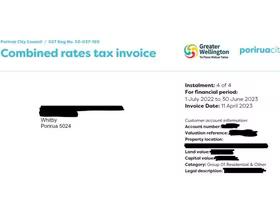
How long does election uncertainty weigh on the economy?
This opinion piece was first published on Stuff on 16 October 2023.
A lot of business questions in the election lead-up focus on the possible pause in economic activity due to uncertainty before the polls. The common logic is that firms will wait to see how their operating environment might change post-election before committing to big investment or other spending decisions. A lot of central government work also grinds to a halt because there’s no point starting a project that will be consigned to the scrapheap in three months’ time. But now that we’ve all been out and voted – with a by-election to go in Port Waikato – we can all get on with things again, right?
Not so fast! Although Saturday night’s result suggests that coalition negotiations between National and ACT will be a lot simpler than if NZ First was involved as well, special votes mean that Winston Peters is not entirely out of the equation. We won’t get certainty about the future direction of government until the final counts are in on 3 November, and if NZ First needs to be a late addition to the coalition mix, expect the process of policy compromise and culling to be extended into the second half of next month.
Once the negotiations are done and dusted, the new administration will want to hurry things along, with a likely “100-day plan” and mini-Budget before Christmas so that key tax and spending changes can be implemented by April next year. National’s campaign has also emphasised the Party’s desire to fast-track key infrastructure projects and improve on Labour’s perceived lack of delivery throughout the last few years.
But even for projects that are reasonably advanced in terms of planning and design, National is likely to find that hurrying these projects into the construction phase is easier said than done, especially given that resources in the infrastructure sector are still highly stretched. More broadly, implementing significant changes to government departmental priorities is like turning around an oil tanker – it’s a big ship, and it takes time for the effects of changes to become apparent.
What does the data tell us?
We’ve looked through GDP data around election time over the last 30 years to see whether there are any discernible trends in different parts of the economy. Our chart shows the quarterly growth rates for each variable from one quarter before the election to two quarters after. We’ve limited our analysis to elections since 1996, on the basis that MMP provides more post-election uncertainty than first past the post. We’ve also excluded 2020 because the pandemic had such a massive effect on many of the economic outcomes that year.
Government consumption shows the most consistent quarterly differences, with strong spending growth during election quarter followed by a lack of growth the following quarter. Rather than a cynical last-ditch attempt by the incumbent administration to boost economic activity at election time, this pattern is more likely to reflect genuine spending associated with the election. For example, this year’s estimated election cost of $180m could add as much as 0.9% to government consumption in a three-month period.
Weakness in household spending around and immediately following election time is perhaps more pronounced than might have been expected, and it suggests that consumers go into their shells around polling time. Government investment spending looks to be weaker after an election, although these quarter-to-quarter figures are notoriously volatile, so it’s difficult to draw a particularly firm conclusion from the data. Business investment also tends to be quite noisy, but the data doesn’t seem to support the orthodox thinking that firms pause their capex spending around election time.
Maybe it’s just a Wellington thing
Sometimes in Wellington, we probably overstate the short-term effects of the government on the broader economy. This viewpoint reflects central government’s outsized role in Wellington, with the sector’s share of the region’s economy almost three times the size of its share nationwide.
If there’s one indicator that demonstrates the government-centric nature of Wellington, it’s house prices. In our chart, ignore the fact that house prices have risen faster around the times Labour has been elected, compared to National, because that gap will largely be due to other influences on the housing market. Instead, look at Wellington’s performance compared to the rest of the country for the year around polling time.
Across the last 11 elections, house prices in the Wellington urban area have outperformed the nationwide average by 3.3 percentage points when a Labour-led government has been elected, but they have fallen behind the nationwide average by 4.4 percentage points when a National-led government has been elected. There are clear effects on confidence in the region’s housing market, and presumably job market as well, depending on which party is calling the shots.
Things are unlikely to be any different after the 2023 election result. National’s aim to reduce departmental spending suggests that Wellington’s property market and, by extension, its economy will struggle to keep up with the rest of the country in coming months.
With the election now over, any pause in activity around the rest of the country while the make-up of the next government is confirmed is likely to be more short-lived than in Wellington. Nevertheless, it will still take time for political leaders to truly stamp their mark on economic outcomes during the next three years.








